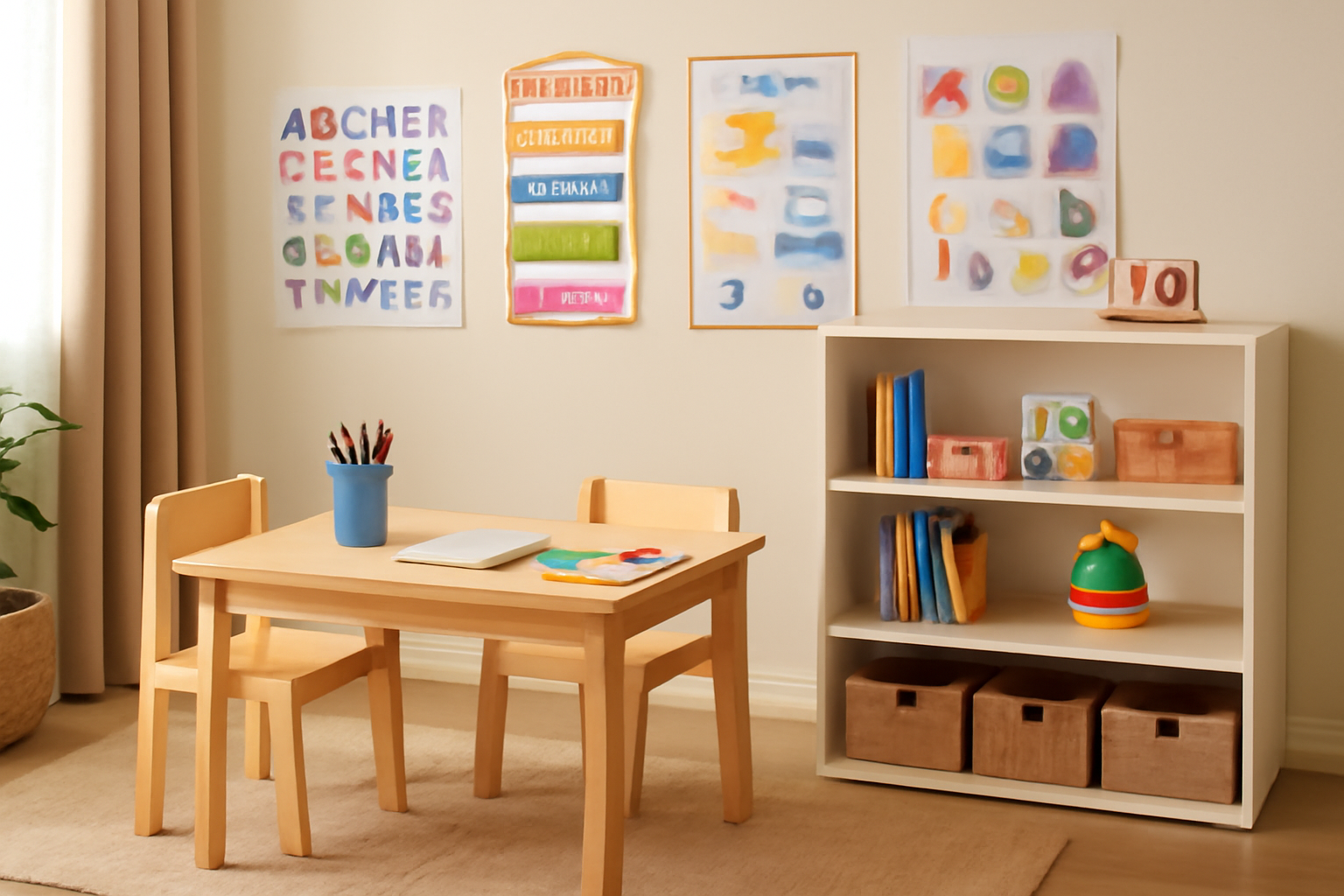Creating a dedicated learning corner at home is one of the best ways to encourage curiosity, routine, and independent learning in young children. You don’t need a large space or expensive materials—just a thoughtful setup that supports focus, exploration, and creativity.
In this article, you’ll learn how to set up a preschool-friendly learning area at home that’s functional, engaging, and aligned with your child’s developmental needs.
Why Create a Learning Corner?
Having a designated learning space helps your child:
- Associate the area with focus and discovery
- Transition more easily into structured activities
- Feel independent and empowered in their learning
- Build a routine and sense of order
- Store learning materials in one easy-to-access spot
This is especially helpful for families homeschooling, following a flexible learning plan, or simply supplementing preschool education at home.
Step 1: Choose the Right Location
Pick a space that is:
- Quiet and free of distractions (avoid TVs or high-traffic areas)
- Well-lit with natural light if possible
- Safe and visible so you can supervise
It could be a corner of the living room, part of the child’s bedroom, or a nook in the kitchen. You don’t need a whole room—just a cozy, consistent area.
Step 2: Add Child-Sized Furniture
Use a small table and chairs that are proportionate to your child’s size. This allows them to sit comfortably while working and promotes independence.
Other seating ideas:
- Floor cushions for reading
- A soft rug for circle time or games
- A bean bag for calming moments
Tip: Choose washable materials and soft textures to make the space both practical and inviting.
Step 3: Organize Materials by Category
Use low shelves, storage bins, or baskets to keep materials organized and accessible. Group items by type to encourage independent selection and cleanup.
Examples:
- Art supplies (crayons, paper, scissors, glue)
- Literacy tools (books, alphabet cards, writing tools)
- Math toys (counting bears, number puzzles, shape sorters)
- Sensory play (playdough, kinetic sand, sensory bottles)
Label bins with words and pictures to support early reading skills.
Step 4: Create Activity Zones
You can divide the learning corner into small zones, even in a compact space.
Suggested zones:
- Reading Nook: a cozy corner with books and a cushion
- Art Station: with drawing tools, paper, and crafts
- Manipulatives Table: for puzzles, blocks, and fine motor games
- Writing Area: alphabet charts, name cards, and tracing activities
Rotating activities weekly keeps interest high and avoids overwhelm.
Step 5: Display Educational Visuals
Visuals stimulate learning and make the space more engaging. Hang at child-eye level:
- Alphabet charts
- Days of the week
- Weather posters
- Feelings charts
- Color and shape guides
These reinforce concepts you’re working on and make learning part of the environment.
Step 6: Personalize the Space
Let your child take part in decorating the corner. Display their artwork, add their name to the wall, or include a photo board of family and pets.
When children feel ownership of the space, they are more likely to use it and respect it.
Step 7: Include a Visual Schedule
Young children thrive on structure. Post a simple visual schedule using images or icons to show the flow of the day.
Example:
- Morning Circle
- Reading Time
- Free Play
- Snack
- Learning Activity
- Outside Play
Update it daily to help your child understand time and routine.
Step 8: Keep It Calm and Clutter-Free
Too many items or decorations can overwhelm a child. Keep the space tidy by:
- Rotating materials every 1–2 weeks
- Storing excess supplies in a separate cabinet
- Doing a quick daily reset together as part of the routine
A clean, calm space supports better focus and smoother transitions.
Step 9: Encourage Independent Use
Show your child how to use the space respectfully:
- “This is where we draw.”
- “After reading, we put the book back in the basket.”
- “You can choose any bin from the shelf.”
Praise independence and problem-solving as they learn to manage their environment.
Step 10: Make It Flexible
As your child grows, so should the space. Adapt materials and visuals based on:
- Age and developmental level
- Current learning themes
- Personal interests (e.g., dinosaurs, space, cooking)
This keeps the area fresh and aligned with their evolving curiosity.
A Space to Spark Growth
A well-designed learning corner is more than just a spot to sit—it’s a place where imagination meets structure, and play becomes learning. With just a little planning, you can give your child a supportive environment that nurtures focus, creativity, and a love for discovery.
Best of all, you’re sending a clear message: “This home is a place where learning is valued, supported, and fun.”
